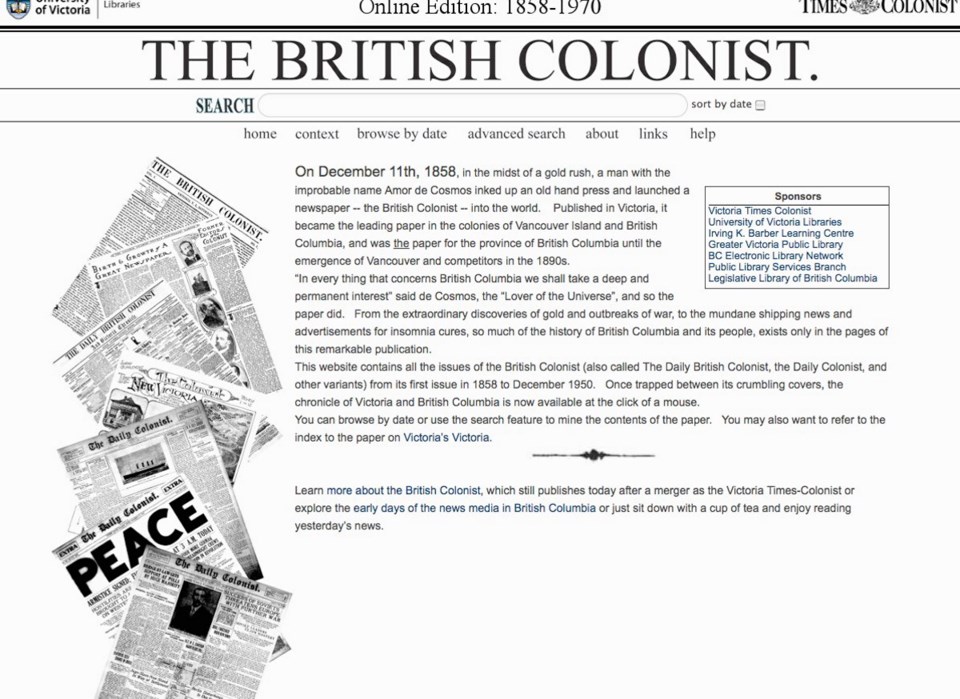The words of Chief William have helped to remind us of the value to be found in historic copies of the Times Colonist and its predecessor newspapers, the Daily Colonist and the Victoria Daily Times.
In March 2014, a letter from the chief of the Williams Lake Indian Band was a key piece of evidence in a favourable ruling in a long-standing land claim.
“I am an Indian chief and my people are threatened by starvation,” Chief William said in his letter, which was published in the Daily British Colonist on Nov. 7, 1879.
“The white men have taken all the land and all the fish. A vast country was ours. It is all gone. … The land on which my people lived for five hundred years was taken by a white man; he has piles of wheat and herds of cattle.
“We have nothing — not an acre. Another white man has enclosed the graves in which the ashes of our fathers rest, and we may live to see their bones turned over by the plough.”
In a ruling by the independent federal tribunal called the Specific Claims Tribunal, Judge Harry Slade used the letter, as well as historical documents and notes, as evidence the colony of British Columbia did not meet its obligations. The dispute, over land that included downtown Williams Lake, had started in 1861.
Back issues of the Colonist are more accessible than ever before, thanks to a digitization project led by the University of Victoria. Back issues from 1858 to 1970 are online at britishcolonist.ca, and the 1970s will be added early in 2019.
As John Lutz, a history professor at the University of Victoria, has said, the website is a game-changer in historical research in B.C.
“Now that the British Colonist is archived online, I think we will find all sorts of revelations,”he said. “Before, it would have taken a lifetime to find anything.”
Digitization of the newspaper started with a 2008 project involving the Times Colonist, UVic and other partners in honour of the 150th year of the newspaper. The coverage at first was 1858 to 1910, but as more money has been made available, the range has been extended several times.
Old issues of the Colonist should be considered compulsory reading for anyone researching the early years of the province. It was the largest newspaper in the province (and before that, the colony) and covered all of B.C.
The britishcolonist.ca website has become one of the most important resources for historical researchers. It has opened many new doors in historical writing, helped genealogists trace their family trees and learn more about their ancestors, and even changed the way that history is taught in our schools.
What kind of information will you find in the back issues? You might discover facts that are not in any official record — for example, the reasons why a council voted this way or that, or details not found in a formal report from an inquest.
You might also find birth, death and marriage information, references to anniversaries, business openings and school reports. You will probably see stories on major news events or disasters, and you can read the first reports.
Look for advertisements that reveal what people were buying, where they lived and where they went. Look also for the lists of passengers on the vessels arriving in Victoria; the federal government did not start keeping track of those names until 1905, so the newspapers are the only source of information before that.
Old newspapers help us understand how society worked in days gone by. They reflected their communities, but that mirror of old has become a window we can use to look back.



